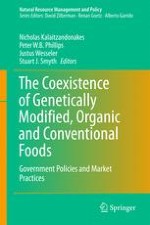2016 | OriginalPaper | Buchkapitel
The Economic Impacts of Regulatory Delays: The Case of HT Soybeans
verfasst von : Nicholas Kalaitzandonakes, Kenneth Zahringer, John Kruse
Erschienen in: The Coexistence of Genetically Modified, Organic and Conventional Foods
Verlag: Springer New York
Aktivieren Sie unsere intelligente Suche, um passende Fachinhalte oder Patente zu finden.
Wählen Sie Textabschnitte aus um mit Künstlicher Intelligenz passenden Patente zu finden. powered by
Markieren Sie Textabschnitte, um KI-gestützt weitere passende Inhalte zu finden. powered by
